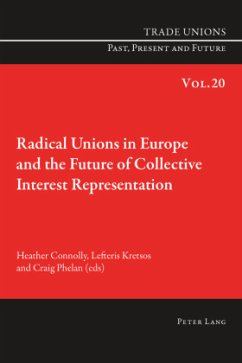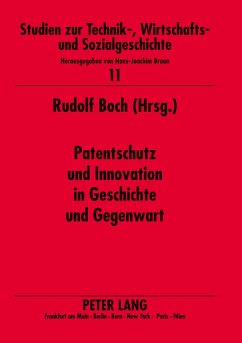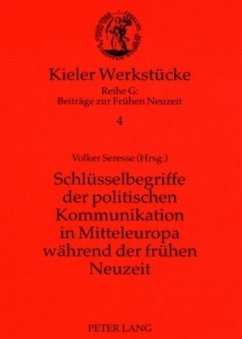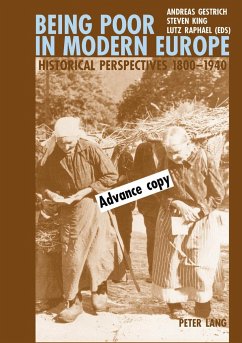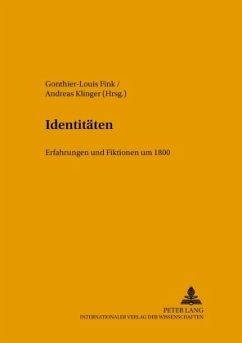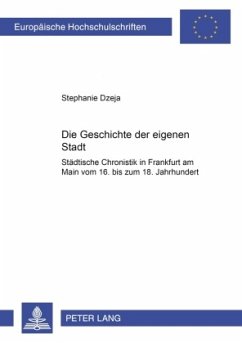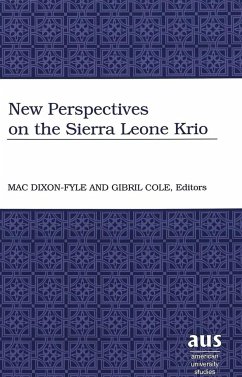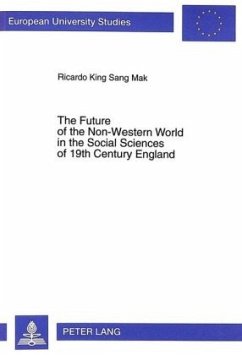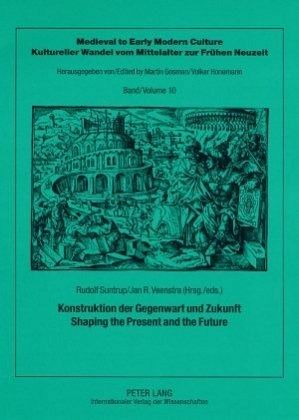
Konstruktion der Gegenwart und Zukunft - Shaping the Present and the Future
Versandkostenfrei!
Versandfertig in 6-10 Tagen
84,50 €
inkl. MwSt.

PAYBACK Punkte
0 °P sammeln!
In einem Europa großer ethnischer, sprachlicher, religiöser und kultureller Vielfalt vollzieht sich etwa zwischen 1450 und 1650 der Prozess der Nationenbildung, in dem sich neben dem Heiligen Römischen Reich Deutscher Nation die jungen Nationalstaaten Europas entwickeln und die kulturellen Eliten ihrer Zeit dadurch ihre soziale Identität zu finden suchen. Dazu dient zum einen die produktive Erinnerung an die eigene Geschichte, dann aber auch die in vielfältigen Erscheinungsformen erkennbare 'Konstruktion der Gegenwart und Zukunft'. Diese kann durch die Herausbildung neuer, zeitbezogener T...
In einem Europa großer ethnischer, sprachlicher, religiöser und kultureller Vielfalt vollzieht sich etwa zwischen 1450 und 1650 der Prozess der Nationenbildung, in dem sich neben dem Heiligen Römischen Reich Deutscher Nation die jungen Nationalstaaten Europas entwickeln und die kulturellen Eliten ihrer Zeit dadurch ihre soziale Identität zu finden suchen. Dazu dient zum einen die produktive Erinnerung an die eigene Geschichte, dann aber auch die in vielfältigen Erscheinungsformen erkennbare 'Konstruktion der Gegenwart und Zukunft'. Diese kann durch die Herausbildung neuer, zeitbezogener Texte und Bilder im Kontext des Cultural Building of Nations geleistet werden, aber auch durch neue Institutionen z.B. der Wissenschaft und der staatlichen, regionalen oder stadtbürgerlichen Kultur. Die elf Studien des Tagungsbandes in deutscher und englischer Spache wollen zeigen, wie neue Sachtexte, Bilder und Einrichtungen die kulturelle Identität der Gesellschaft auf verschiedenen Ebenen zu stiften vermögen.
Between 1450 and 1650, a process of nation building took place in an ethnically, linguistically, religiously and culturally diversified Europe. Next to the Holy Roman Empire, young European nation states came into being whose cultural elites strove to establish their social identity not only through productive reflection on their own pasts, but also by means recognizable constructions of the present and the future. This cultural building of nations took place through new texts and images, as well as by new institutions of science, administration, and civic culture. The eleven studies in this volume of proceedings examine how texts, images and institutions contribute to the construction of a society's cultural identity.
Between 1450 and 1650, a process of nation building took place in an ethnically, linguistically, religiously and culturally diversified Europe. Next to the Holy Roman Empire, young European nation states came into being whose cultural elites strove to establish their social identity not only through productive reflection on their own pasts, but also by means recognizable constructions of the present and the future. This cultural building of nations took place through new texts and images, as well as by new institutions of science, administration, and civic culture. The eleven studies in this volume of proceedings examine how texts, images and institutions contribute to the construction of a society's cultural identity.




